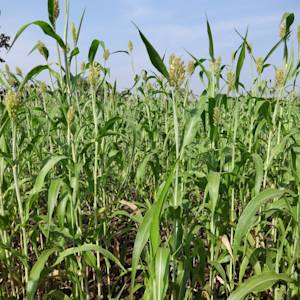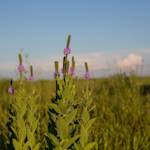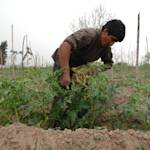Rice-fish farming in China
1978 CE • China
"Rice–fish culture is a traditional farming system. Since 1978, the area devoted to Rice-fish culture has been expanded several fold, fish production has increased rapidly, and fish-farming technology has been improved. In many areas, good harvests of both rice and fish have been achieved . . . Ni Dashu developed the theory of Rice–fish mutualism, in which ricefields are used for fish culture and fish farming increases rice production . . . In the ricefield, the stocked fish transform stagnant energy (e.g., weeds) and possibly lost energy (e.g., phytoplankton, zooplankton, and aquatic insects) into useable products (fish and rice). Fish can also minimize outbreaks of diseases and insect pests and reduce the application rate of pesticides, which can pollute water, soil, rice, and fish . . . Because the fish consume phytoplankton, zooplankton, and weeds that compete with rice, they play an important role in increasing and stabilizing soil fertility, eradicating harmful insects and pests, recovering lost energy, and adjusting energy flow. In the symbiotic Rice–fish ecosystem, the mutualism between rice and fish is fully exploited to provide high-quality products and good environmental conditions . . . Rice–fish culture expands the area for fish culture and produces more fish products . . . This practice is an effective way to increase fish production in hilly areas. At the same time, Rice–fish culture effectively increases the income and living standard of farmers, particularly those living in hilly, rural areas."
Kenneth Tod MacKay, Rice-Fish Culture in China (London, England: ITDG Publishing, 1995).
Image: Evgeniya Soldatova, CC BY-SA 4.0, via Wikimedia Commons


Learn about Maya Lin’s fifth and final memorial: a multi-platform science based artwork that presents an ecological history of our world - past, present, and future.

Discover ecological histories and stories of former abundance, loss, and recovery on the map of memory.

Learn how we can reduce our emissions and protect and restore species and habitats – around the world.

See how art can help us rethink the problems we face, and give us hope that each one of us can make a difference.

Help make a global memorial something personal and close to home. Share your stories of the natural world.


